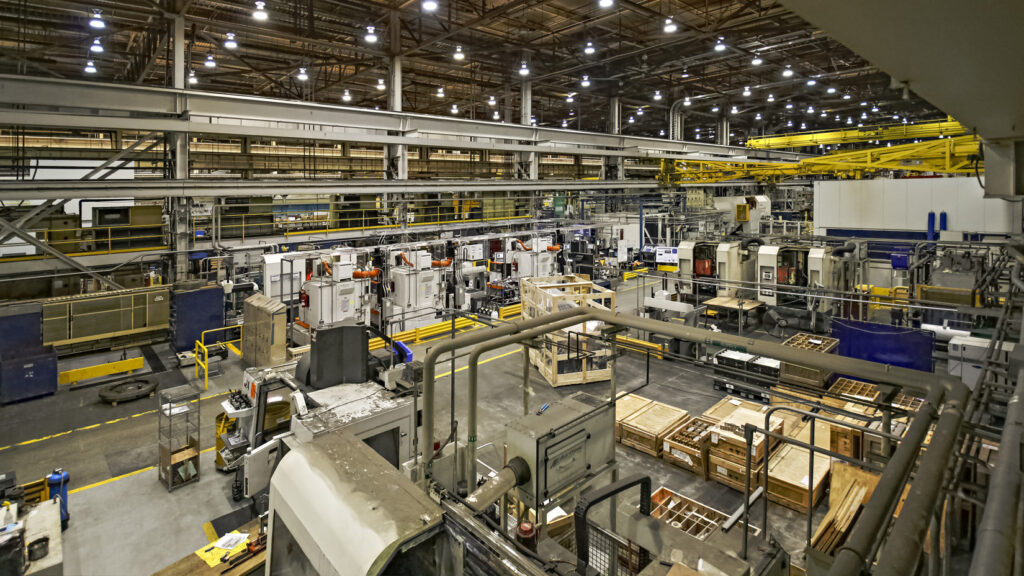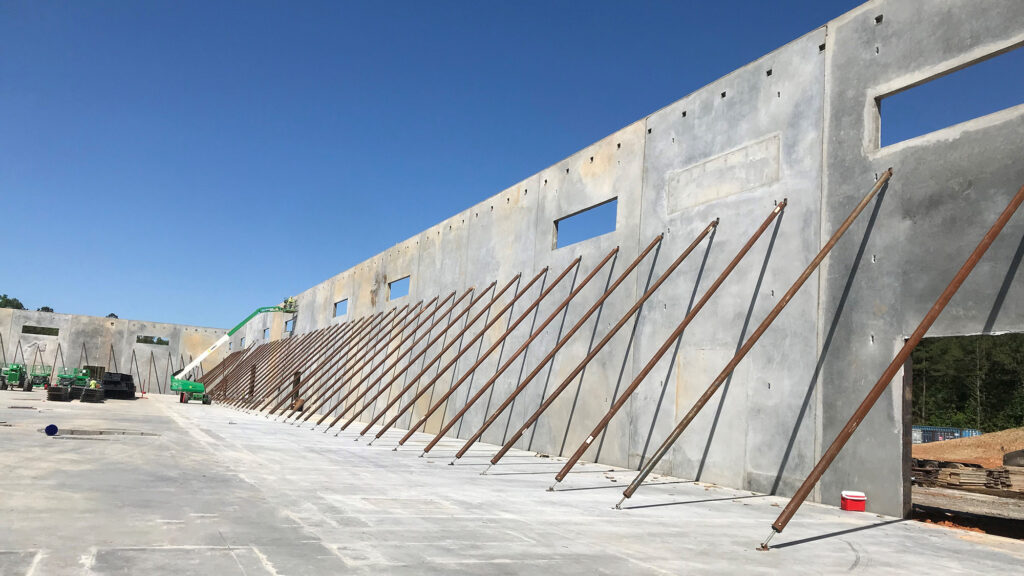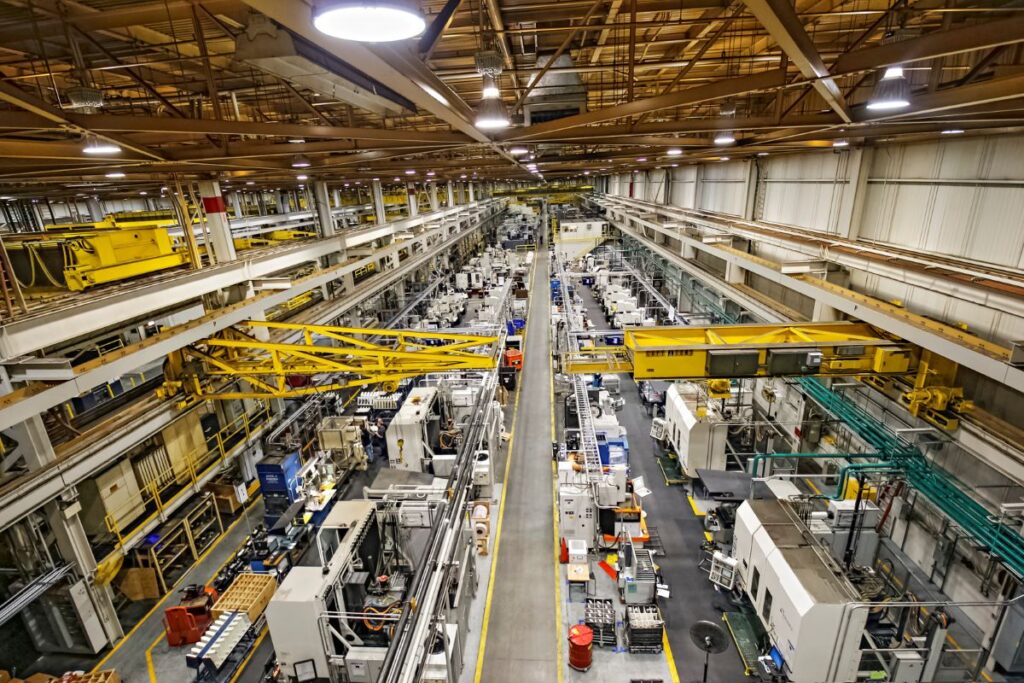
5 Strategies for Superior Industrial Construction Projects
We are always thinking about what our customers want and need. With industrial construction projects, the solution is sometimes highly complex, like installation of seven, 30-ton test benches for ZF Gray Court or the sustainability and energy efficiency initiatives that we designed for MÜNZING’s newest manufacturing facility.
The idea behind the solution, however, begins with a simple question: What can we do to start addressing our customers’ issues as early as possible and make it easy for them to make informed decisions about their most important projects?
A M King’s client-centric Design-Build methodology answers that question and provides a framework for exceeding owner goals. In this blog, I’ll discuss how we develop custom solutions that bring value to industrial construction projects — even in the most demanding manufacturing environments.
Adapt to Each Stakeholder and Scope

If a contractor tells you that you can save you significant money without having set foot in your facility, consider this a red flag.
Whether it’s a $350 million greenfield facility project or a small-to mid-size construction project, the outcome will be more successful if you’re working with a Design-Build team who knows your business.
Our integrated services include ongoing facility management, and that puts us in the best position to address our manufacturing clients’ complex requirements.
Complexity doesn’t stop at the technical specs — it extends to the people involved. If a contractor is great technically but can’t effectively communicate with personnel in procurement, compliance or local authorities, nothing gets done. If they only want to interact with the C-Suite and VPs and ignore engineers on the front line and the smaller (albeit just as valuable) projects, the project’s success will be jeopardized.
That’s where our Design-Build method shines. We meet your internal teams where they are — whether it’s senior leadership or shift supervisors — and keep communication streamlined and decisions timely. From greenfield facilities to retrofits in tight spaces, we adapt the process to the project, not the other way around.
Cut Waste with Lean Design

The overarching goal of lean manufacturing is the elimination of waste in the form of inefficiencies related to labor, movements and materials essential to the manufacturing process. I often meet with clients that initiated an entire lean effort after the construction of their facility. This can result in a manufacturing team who is essentially fighting the actual design of the building, having to make constant modifications, or moving equipment.
Manufacturers who have lean in mind when they design a facility are winning. Truly embedding lean into the design of the facility is what really sets A M King apart. Applying lean principles during the design phase of a project creates a successful foundation with focus on:
- Removing non-value-added items early so they aren’t carried into more costly stages.
- Streamlining communication and creating smaller design packages for accelerated project delivery.
- Building a culture of continuous improvement, collaboration and shared understanding from the beginning.
Every design decision serves a purpose — and that discipline carries forward through construction and commissioning.
Address Hazard/Classification Challenges

A design-only firm may not have spent time on the facility floor before. A general contractor may not have the expertise to advise you if a portion of your design isn’t properly aligned with the facility’s hazard controls. The ideal Design-Build approach makes it easy to get it right the first time — no shortcuts, no surprises.
A M King’s work with GE Vernova Greenville on their hydrogen fluoride ion cleaning furnace program (HFIC) perfectly illustrates this point. An HFIC furnace is used to remove oxides and coatings from superalloys, an essential function for building the power turbines that many portions of global infrastructure depend on. While the process is safe and effective, it has the potential to be extremely hazardous.
With our Design-Build expertise, we were able to be involved early and play an active role in GE’s hazard and operability study, investigating how the process could create risk for building occupants.
This allowed us to identify potential dangers during design, address them through specific floor plans and select technological investments that put an emphasis on personnel safety.
Coordinate with Equipment Vendors Early and Often
Equipment is the beating heart of a facility. If the arrival of essential equipment is delayed or if it’s not installed correctly, the product stops flowing. We can all do the math here, with potential losses in the tens of millions.
We prevent this by bringing equipment coordination into the earliest stages of design. We review vendor cut sheets, confirm process and utility requirements, and often participate in pre-buy meetings to ensure the facility is built around the actual equipment — not generic placeholders.
This certainly requires a high level of technical expertise, but at the end of the day, it simply comes down to good communication.
Safely Build Around Live Operations

External contaminants resulting in quality issues. Unvetted subcontractors. Scheduled down-time dragging on longer than expected with no end in sight. These are all concerns and stories that I’ve heard from manufacturing leaders when discussing previous facility expansions.
The vast majority of construction projects that manufacturing executives get involved with are critical facility expansions or renovations that keep existing operations modern, productive and safe.
The methodology behind the project’s delivery is critically important. You probably guessed that I’d be bringing up Design-Build again, and you are right. Design-Build for operational facilities can really shine when it comes to timelines. Knowing exactly when and what needs to be done from inception can make all the difference between a short weekend shutdown and something much longer.
That’s why every industrial construction project we take on comes with a tailored phasing plan, detailed logistics strategy, and clear separation of construction zones from operational areas.
Construction in an operational facility is a truly unique challenge, and it’s not one that leaders are typically trained for. Whether it’s your first time leading a project or your 50th, selection of the right partner is important.
Superior Industrial Construction Projects
Our teams are always thinking about how we can make the complex simple, solve the problem before it becomes painful, and create the best environment for stakeholders to make the right decision. Whether it’s designing around complex hazardous classifications or coordinating early with OEMs to streamline equipment installs, our Design-Build approach keeps everything — and everyone — moving in the same direction.

About the Author – Mike Sharpe, Jr. is Business Development Manager at A M King’s Greenville office, overseeing sales and front-facing client engagement. He focuses on developing strategic relationships with stakeholders in key manufacturing market sectors, including automotive, aerospace, energy, chemical and more.
A M King is an integrated Design-Build firm based in Charlotte, NC with offices in Greenville, SC and Chicago, IL. An employee-owned company, A M King consistently and successfully delivers quality projects throughout the United States.






